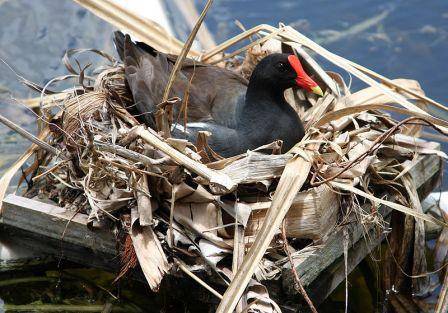100 years ago, on the fateful day that RMS Titanic struck the iceberg, another less dramatic event occurred in a quiet corner of Southern England which made ripples in the calm waters of the entomological world; in a moorhen's nest in the river at Potter's Bar, chartered surveyor and amateur beetle expert E.C. Bedwell (1875-1945) collected two specimens of a beetle that had never been seen by anyone, either before or since.
The beetle itself is far from titanic - 1mm long, brownish black, it is not much to look at, but this is perhaps just as well considering that only one person has ever seen it alive, and that was 100 years ago.
Aglyptinus agathidioides with K.G. Blair's orignal determination label
Image Harry Taylor 2012
After confusing the scientific community and being passed from specialist to specialist for nearly 20 years, the the 'Potter's Bar Beetle' (a member of the fungus beetle family Leiodidae, of which there are approx 3,800 described species worldwide) was eventually given a scientific name in 1931 by Natural History Museum coleopterist Kenneth Gloyne Blair (1882-1951); he called it Aglyptinus agathidioides, the specific name marking its similarity to the widespread genus Agathidium. [see footnote]
In the ensuing 100 years numerous coleopterists have dug through swan and moorhen's nests (neither easy nor pleasant, the nests are usually foul smelling mounds of vegetation, often in the river itself) in Hertfordshire in search of it, but no more beetles have ever been found. It has been speculated that the beetles were tourists, imported from another continent, but which one, and how? Their closest relatives apparently occur in North and Central America, but neither US entomologists, nor the extensive 'Biologia Centrali Americana' (1879-1915) picked up anything similar. It is also not clear how imported beetles could have been found in a moorhen's nest on a sleepy stretch of an English river.
The Biolgogia Centrali Americana http://www.sil.si.edu/DigitalCollections/bca/
A moorhen nest
Image Ianaré Sévi 2008
Conservationist blogger Mark Avery discussed his unsuccessful attempts to rediscover it in 2010, and it was thanks to his enquiries that we got the Type Specimen out of the collection and noticed the inauspicious collection date!
One of the two specimens (the male Holotype) is now at the Natural History Museum in London and the other (the female Paratype) in E.C. Bedwell's collection at the Norwich Castle Museum; they are carefully looked after as the only examples of their kind. It is not often that a new species is discovered in England, and even rarer that it disappears as suddenly as it appeared!
One can imagine Bedwell getting home from his collecting trip, and saying to his family 'I found an interesting beetle yesterday, anything else much happened in the world?'
And while the world was reeling from the unexpected destruction of a glorious symbol of industrial might and imperial power, Bedwell was poring over his vials of beetles and thinking 'I wonder what that little brown one is...'
_________________
Footnote: The genus Agathidium has since achieved its own notoriety; in 2005 US scientists Quentin Wheeler (former Keeper of Entomology at the Natural History Museum) and Kelly Miller named some new species of that genus after politicians George Bush (Agathidium bushi), Donald Rumsfeld (Agathidium rumsfeldi) and Dick Cheney (Agathidium cheneyi). Small leiodid fungus beetles seem to have a tendency to get mixed up in world affairs....




